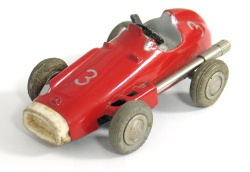How can I find the perfect – green – kettle?
(First, sorry for the lack of posts for the last two days – it was my birthday on Tuesday and so I’ve had two days off. Back to the grindstone now though ;) )
 We’ve had an email from Su:
We’ve had an email from Su:
Sorry about this, as it’s not about recycling or repairing, but I thought some like-minded soul may be able to help!
My query relates to electric kettles. In my house they last, on average about 15 months. I have tried expensive, cheap, stainless steel, plastic, cordless… I’m not sure why they don’t last since I only use them for their intended purpose ie: boiling water, but modern kettles don’t seem to be made to be repaired.
I have been using a stove top kettle on my electric cooker for about a year now, BUT in a morning it’s almost half an hour before I get my pot of tea (and I NEED my tea in a morning!). Plus, I believe that although electric kettles use a lot of power, they use less than the cooker. So my point is this, I want to buy a new kettle, but it needs to be a) energy efficient, b) repairable & c) preferably, as ethical as possible. All ideas gratefully received!
We go through cycles of this – our electric kettle develops some annoying fault which John tries but fails to fix and we decide that electric kettles are a wasteful scam. Then we drag our stove top kettle out of storage and clean it off, only to get incredibly frustrated at how long it takes to boil on the stove and eventually snapping and buying another electric kettle. I think our kettles last about 2 years – so slightly longer than Su’s – but still, a brief enough lifespan to be very wasteful.
So any ideas for Su? There are a number of electric kettles that bill themselves as being eco-friendly – has anyone had any experience of those? Are there any other options?
(Photo by chris2k)























Our last electric kettle started leaking around the water level thing so this time we’ve gone for one without a water level or any other fancy features/design elements which may be points of failure – it’s just a plain metal jug. I think we’ve had it about 2 years now so I guess we’ll see over the next few months whether the choice was actually beneficial.
I can’t claim that it’s particularly green/eco, but I’ve had this kettle http://www.brita.net/princess.html a fairly long time (3+ years), so I guess that sort of does make it fairly green. Maybe the filtered water helps it keep going?
I try and get a kettle that has a cup measure on its side so you can fill it up for the exact amount of water that you boil, as I think that is the is that we boil a whole kettle when we only need a third.
So try and find a kettle with a minimum level that is about 2 cups of water.
I have had experience with eco kettles where they measure the exact amount of water into the recess, but I find them over complicated and it works perfectly well with a standard kettle to put in the amount you need.
Ooh ooh ooh I know I know!
I recently replaced my stove-top kettle with an electric one, and figured it would be more efficient if I got one I could boil one cup at a time in.
It was amazingly difficult to find the right kettle, especially ‘cos I didn’t want to spend loads of money on one, but I eventually went for the Philips “One Cup” and it’s great.
http://www.argos.co.uk/static/Product/partNumber/4222932.htm
Boils INCREDIBLY fast (40 seconds for 1 mugfull) plus it has a concealed element, i.e. the bottom of the inside of the kettle is flat and the coiled up heating element is below that, so when it scales up you can realistically descale it and scrub the scale off the bottom, which you can’t do very well with a normal element.
Descaling keeps it efficient, and this kettle also has a limescale filter in the spout which helps too. I really really like mine, and I promise I don’t work for Philips (or Argos)!
BTW most electric kettles have a minimum fill level of about 2 cups of water, meaning that if you regularly make only one cup of tea at a time you have to either boil twice as much water as you need every time, or shorten the life of your kettle by underfilling it all the time.
Hence the genius of the Philips one which will safely boil only one cup at a time.
Trying to find a good one-cup kettle which does not drip when pouring, and not to heavy to handle for a senior person.
I have used a whistling gas kettle for the last 15 years. Only 2 kettles in that time. Gas in UK costs a third the price per Kwh of electricity. Even if you use slightly more gas you are still saving money. I bought one with the largest base I could find, measure half a pint with a measuring jug for one cup, and it’s boiled in 2 minutes.
Ours is Morphy Richards (all plastic). We have it for over 3 years…still going strong.
The annoying part with it is that it spills when pouring the water.
A few tips: to make it efficient, remove the scale by boiling a solution of water and vinegar. It stinks, but it works! And you don’t add other chemicals in your kettle.
This kettle doesn’t have cup measure, but I think this can be easily adjusted by measuring the water with the cup you actually use.